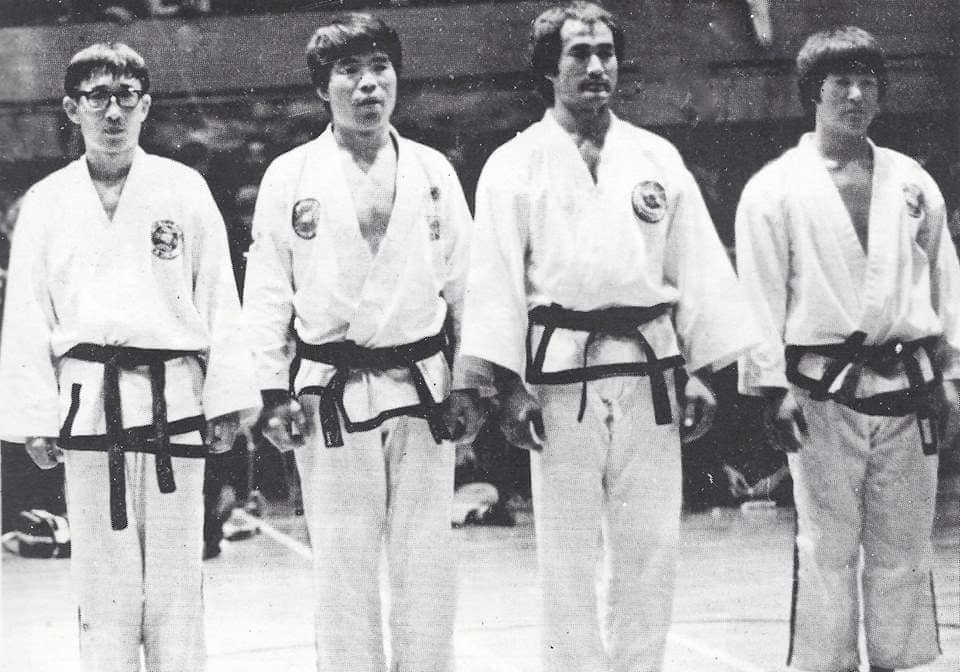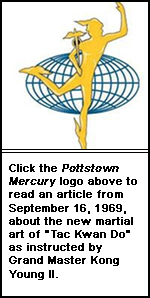Pottstown's role in the global rise of Taekwon-Do
legacy's legacy
Southeastern Pennsylvania, and the Pottstown area more specifically, enjoys a deep legacy in the martial art of Taekwon-Do and its rapid spread across the U.S. and around the globe, and June of 2019 marked the 50th anniversary of the art being part of our local community. In fact, it has been said that Taekwon-do's founder, General Cho, declared Pottstown as the "heart of Taekwon-do" in the United States.
So...how in the world did our town become an epicenter of a Korean martial art?
The roots of Pottstown's Taekwon-Do community
On April 11th, 1955, the name Taekwon-Do was officially adopted for the martial art developed by Choi Hong Hi (1918-2002), a general in the Korean army. His creation comprised elements from the ancient Korean martial art of Taek Kyon and from Shotokan karate, a martial art he had learned while studying in Japan. By the mid 1960s, General Choi had assembled a group of twelve South Korean martial art masters—the so-called Original Masters of Tae Kwon-Do—to fulfill his ultimate goal for the art: to reach all four corners of the globe with Taekwon-Do as a practical means of personal self-defense integrated within an ethical framework for personal behavior. In 1969, one of those Original Masters, Grand Master Kong Young Il, came to live in the U.S. as an ambassador of the art, under a sponsorship agreement with the Valley Forge Army Hospital located in Phoenixville, Pennsylvania.

 Leaving his homeland, GM Kong traveled to Southeastern PA and found himself accommodations in the small industrial town of Pottstown, Pennsylvania, a few miles from the Army Hospital. He launched a Taekwon-Do program at the Phoenixville YMCA. Around the same time, from an unassuming structure on the southern side of the Schuylkill River near the Hanover Street bridge—a converted luncheonette with a single room where he taught, lived, ate and slept—GM Kong went about the business of helping to make General Choi's goal a reality, embodying the motto known to all of our art's practitioners: "whole life devoted to Taekwon-Do." His facility was hot and humid in summer, drafty and frigid in the winter, damp in fall, and musty in the spring. It was never a comfortable environment, and GM Kong's sleeping quarters were separated from the dojang by only a curtain. But to a Grandmaster on a mission with his enthusiastic students, creature comforts didn't matter one bit.
Leaving his homeland, GM Kong traveled to Southeastern PA and found himself accommodations in the small industrial town of Pottstown, Pennsylvania, a few miles from the Army Hospital. He launched a Taekwon-Do program at the Phoenixville YMCA. Around the same time, from an unassuming structure on the southern side of the Schuylkill River near the Hanover Street bridge—a converted luncheonette with a single room where he taught, lived, ate and slept—GM Kong went about the business of helping to make General Choi's goal a reality, embodying the motto known to all of our art's practitioners: "whole life devoted to Taekwon-Do." His facility was hot and humid in summer, drafty and frigid in the winter, damp in fall, and musty in the spring. It was never a comfortable environment, and GM Kong's sleeping quarters were separated from the dojang by only a curtain. But to a Grandmaster on a mission with his enthusiastic students, creature comforts didn't matter one bit.
General Choi would occasionally visit Pottstown to observe belt-rank testing of GM Kong's original students, correct patterns, and offer guidance and support. A number of those original students came from the Phoenixville YMCA's karate club, notably including Master Thomas Fisher (1931-2013) and Master James Murray. After GM Kong decided that his work in founding a base for Taekwon-Do in Southeastern Pennsylvania was complete, he moved on to continue his mission of spreading the art, with his influence being felt in Western Pennsylvania, Texas, and elsewhere.

Evolution into a regional TKD powerhouse
In 1980, Master James Murray established his own school. General Choi had recognized Master Murray's enthusiasm and aptitude for the art, and installed Murray as one of his own direct, elite students. Master Murray would regularly travel great distances to learn from General Choi and other senior practitioners; his dogged determination to uphold the General's standards while improving his skills and those of his students ignited that same fire among his school's community. Wave after wave of new faces—people who had heard from friends and neighbors about the intensity of the training and the physical and mental benefits it was providing—matured from newcomers into seasoned practitioners under Master Murray's training. A significant number of his students evolved into professional martial artists of their own volition and established schools throughout the region, deepening Taekwon-Do's reach in Southeastern Pennsylvania and the broader mid-Lantic region.
A legacy continues
Legacy Taekwon-Do School strives to uphold the tradition of excellence as handed down from General Choi through GM Kong and Master Murray. Our goal is simple: to help tomorrow's new students experience what we and our "Taekwon-Do ancestors" found so powerful about our art. By doing so, we hope to pass that legacy on to successive generations of students, so that they continue the work begun by General Choi and GM Kong in 1969.
